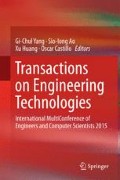Abstract
This study presents the development of a computer simulator that can evaluate the effectiveness of various evacuation guidance methods for tourists from disaster areas to specific safe destinations. The majority of studies on providing evacuation guidance have targeted residents, with little consideration for visitors to the area such as tourists and businesspeople. Most tourists tend to converge on the limited number of rail stations, which may result in severe crowding and panic. This system, which implements a phased evacuation guidance method, can simulate an evacuation route on the map by entering basic information such as the starting point, emergency evacuation site, eventual evacuation shelter and the number of evacuees. To show the appearance of crowding in a place on the evacuation route, we try to visualize the number of evacuees in the space. The effectiveness of the system was tested by simulation of evacuation processes that utilize a phased evacuation guidance method to be introduced in Kyoto, the most popular tourist destination city in Japan.
Access this chapter
Tax calculation will be finalised at checkout
Purchases are for personal use only
References
Niigata Prefecture Industrial Tourism Department, Tourist Bureau (2009) Interchange planning division: summary of changes in Niigata sightseeing, Oct 2009 (in Japanese)
Tokyo Metropolitan Government Bureau of Industrial and Labor Affairs, Tourism Department (2012) Planning division: factual investigation into the number of the tourists in Tokyo in 2011, 18 July 2012 (in Japanese)
Kyoto Shimbun: Kyoto-Shiga economy this year (3) for sightseeing, 23 Nov 2011 (in Japanese)
Nakatani Y (2011) A verification and research report on collecting and making assistance information available on tourist’s disaster prevention, Mar 2011, pp 62–66 (in Japanese)
Kyoto City International Foundation, Disaster Information. http://www.kcif.or.jp/HP/jigyo/saigai/en/hinanjo-map/index.html/. 01 Aug 2015
Kinugasa S, Izumi T, Nakatani Y (2012) Evaluation of a support system for large area tourist evacuation guidance: Kyoto simulation results. In: Proceedings on the 8th international conference on geo-information for disaster management (Gi4DM), pp 67–78, Dec 2012
Togawa K (1963) Study of the evacuation facilities based on the observation of the crowd (in Japanese)
Helbing D, Molnar P, Farkas IJ, Bolay K (2001) Self-organizing pedestrian movement, environment and planning B: planning and design, vol 28, pp 361–383
Author information
Authors and Affiliations
Corresponding author
Editor information
Editors and Affiliations
Rights and permissions
Copyright information
© 2016 Springer Science+Business Media Singapore
About this paper
Cite this paper
Emori, N., Izumi, T., Nakatani, Y. (2016). A Support System for Developing Tourist Evacuation Guidance. In: Yang, GC., Ao, SI., Huang, X., Castillo, O. (eds) Transactions on Engineering Technologies. Springer, Singapore. https://doi.org/10.1007/978-981-10-0551-0_2
Download citation
DOI: https://doi.org/10.1007/978-981-10-0551-0_2
Published:
Publisher Name: Springer, Singapore
Print ISBN: 978-981-10-0550-3
Online ISBN: 978-981-10-0551-0
eBook Packages: EngineeringEngineering (R0)

